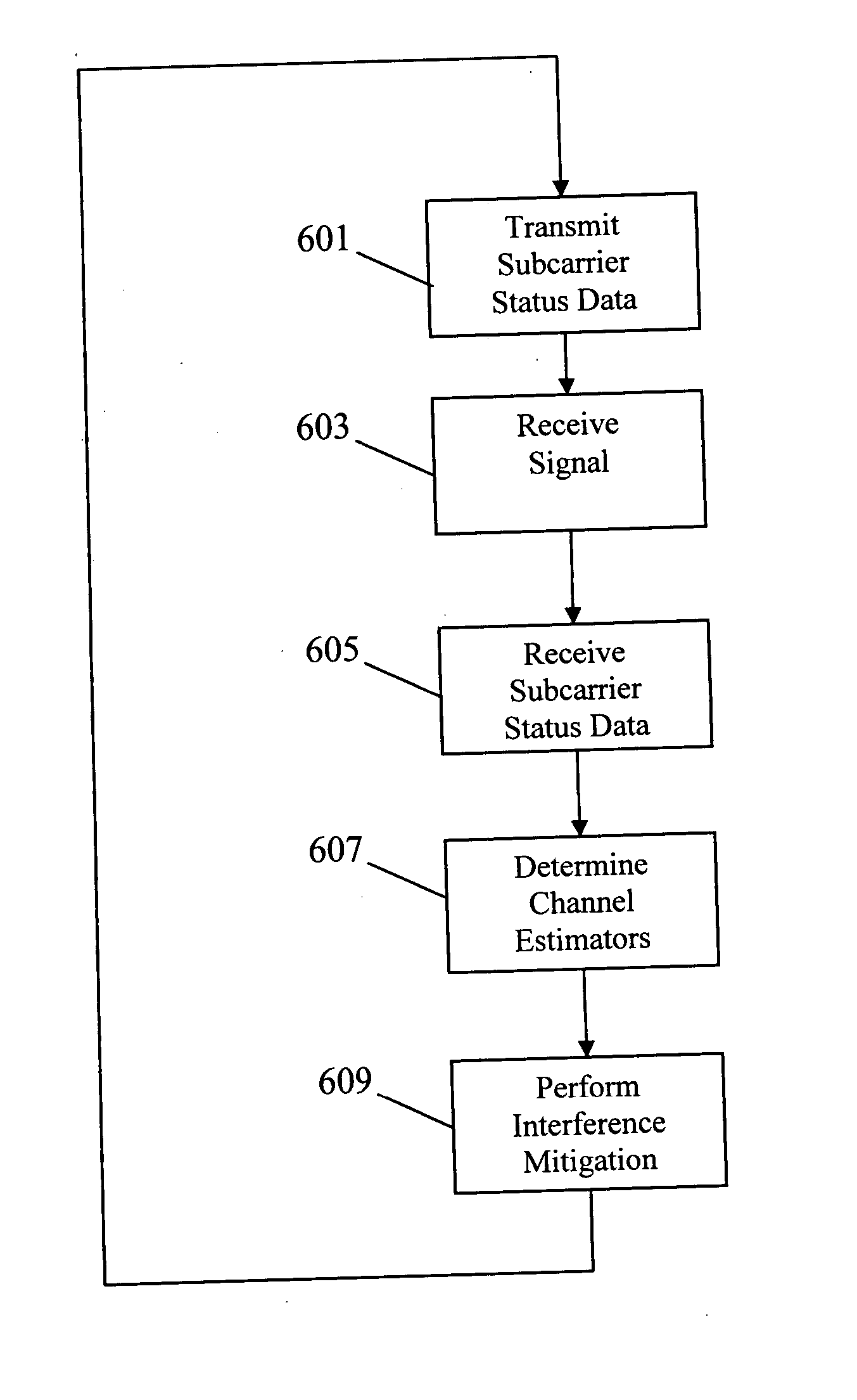Interference mitigation for orthogonal frequency division multiplexing communication
a technology of orthogonal frequency division and communication, applied in the field of interference mitigation for orthogonal frequency division multiplexing communication, can solve the problems of high dependence on performance and efficiency, degrade transmission, and interference seen from neighboring cells, so as to facilitate the determination of the active status of subcarriers, facilitate and/or improve interference mitigation
- Summary
- Abstract
- Description
- Claims
- Application Information
AI Technical Summary
Benefits of technology
Problems solved by technology
Method used
Image
Examples
Embodiment Construction
[0075] The following description focuses on embodiments of the invention applicable to a cellular communication system using OFDM techniques. However, it will be appreciated that the invention is not limited to this application but may be applied to many other OFDM communication systems including, for example, OFDM based Wireless Local Area Networks such as IEEE 802.11.
[0076]FIG. 1 illustrates an example of a communication system in accordance with some embodiments of the invention. FIG. 1 specifically illustrates one OFDM receiver 101 and four OFDM transmitters 103, 105, 107, 109. It will be appreciated that the communication system may comprise many more OFDM receivers and transmitters and that OFDM transmitters and receivers may be combined as OFDM transceivers. Thus, typically, most communication units comprise both an OFDM receiver and an OFDM transmitter.
[0077] In the example, the OFDM receiver 101 is receiving a desired signal from a first OFDM transmitter 103 whereas the o...
PUM
 Login to View More
Login to View More Abstract
Description
Claims
Application Information
 Login to View More
Login to View More - R&D
- Intellectual Property
- Life Sciences
- Materials
- Tech Scout
- Unparalleled Data Quality
- Higher Quality Content
- 60% Fewer Hallucinations
Browse by: Latest US Patents, China's latest patents, Technical Efficacy Thesaurus, Application Domain, Technology Topic, Popular Technical Reports.
© 2025 PatSnap. All rights reserved.Legal|Privacy policy|Modern Slavery Act Transparency Statement|Sitemap|About US| Contact US: help@patsnap.com



